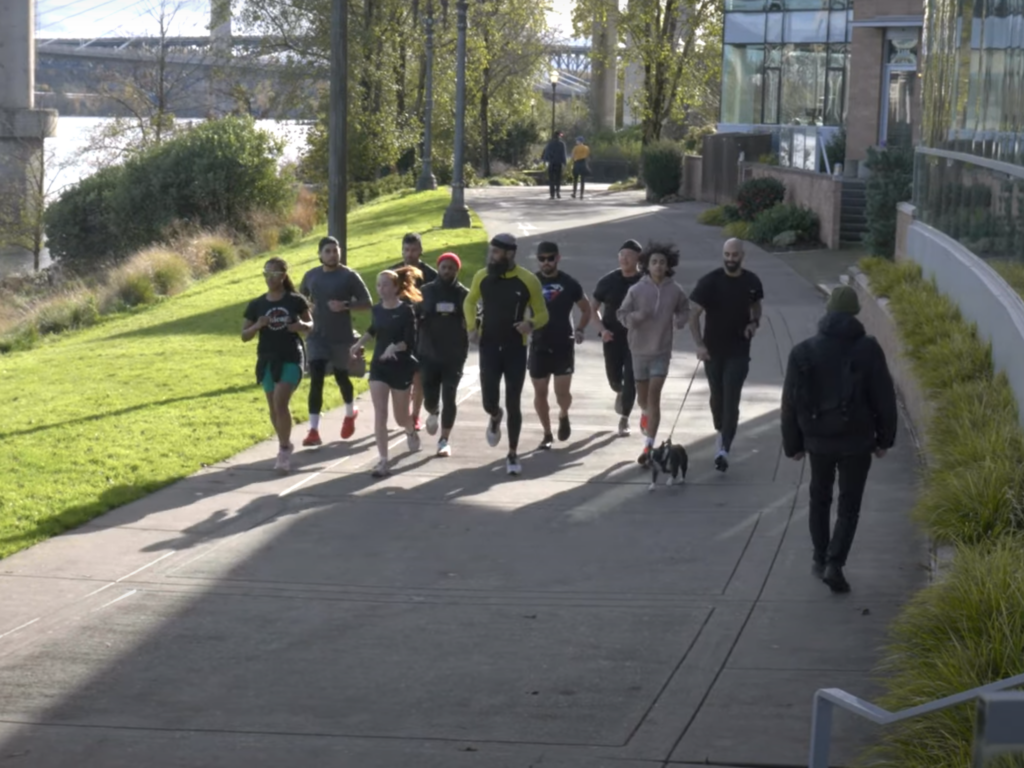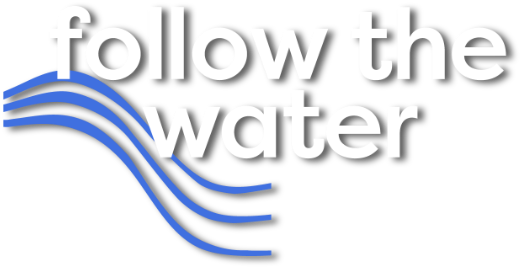Follow the Water Chapter 3: Reconnection
Author
Posted
Share


Begin the journey to reconnect. We all take an active role with our water. Sometimes it can be beneficial, sometimes it can be detrimental but we all have an impact. In this video local members of our community share personal stories on the simple ways they were able to reconnect with our water in positive ways.
In this video we explore
- Reconnection through photography
- Reconnection through running
- Reconnection through first foods
- How will you reconnect?
Transcript
MJ: The way water works with photographing animals is, it’s a little bit more unique than just land. To really understand what’s there, you have to spend a bit of time and watching. A shimmer of silver may indicate, oh my gosh! There’s a fish there! If I see big, deep, undulating waves coming out of the bank, I get my camera, and I stay there and I wait because I know a beaver’s going to come out. The first thing my husband and I noticed when we got here is it’s a great environment. There’s this beautiful creek. There’s these grand woods. I looked at that creek and saw just a pair of mallard ducks swimming down it and thought, perfect. If that’s all I ever see when I’m here, I’ll be content. Not a few months later, we saw a family of otters swimming down the creek, and I phoned up the Johnson Creek Watershed Council. And they said, “That is so great in Gresham! But did you get a photograph?” At that point, I determined to go out and buy myself a camera and start cataloging what was coming down the creek. Putting the photos up and sharing them immediately engaged people. That encouraged me: Just keep going. Take more pictures. Show more people. It’s not so much that they’re my photos, but it’s a photo that’s starting a real dialogue and an interest. To just talk is one thing, but to get people engaged with the environment is another thing entirely. To encourage them to be outside heightens the awareness of the environment, how to care for it, and the knowledge that these animals are neighbors. There’s a peace with just being in the environment, listening, looking, and sensing. I think the simplest way for people to reconnect with rivers in particular is to go down to the bank and touch one. Take hold of it. What’s it like? Feel it running through your fingers. Once you’ve felt that, I think, you understand how visceral experience can be. You connect to a childlike understanding of just being with everything, of taking enjoyment in looking at water, taking enjoyment of having no shoes on, walking on wet grass. It’s a real sense of we already belong to it because we’re part of this system, this interbeing, this integrated and natural world. And I don’t want people to ever feel that they are just observers. They take an active role with the water, with the river. It’s not just the creek doing its thing. You do something too. It could be beneficial, could be detrimental. It’s consequential. My name is Mareshah Jackson. I go by MJ. I live in Portland, Oregon, kind of in downtown, and I typically reconnect with water by running to the waterfront. I run with the run club called Deadstock Run Club that always runs on the waterfront. It’s really hard sometimes a) when you’re new to a place to meet people, and in a place like Portland, it can also be hard to find a lot of Black people, brown people, diverse groups of people. And so, Deadstock kind of provides both of those things. Rivers are a natural running route. You can do an out and back. You’re not going to get lost. You just follow the water. And then it’s also just so aesthetically pleasing. It’s like one of my favorite things to live now in a city that has such a strong kind of path along the river. My view of what it means to reconnect with water has changed since childhood, but I’m not sure exactly when that shift happened. As I got older, I remember I started taking long walks, and I was like, I’m just going to start calling this a hike because I don’t know where I can hike nearby. But I lived in a really hilly area in Los Angeles, and I was like, this is basically hiking. So, I would tell people like, “I go on urban hikes.” Me, as a Black woman in particular, it’s like, you know, whenever you saw people that looked like me in natural areas, it wasn’t necessarily in a leisurely, fun context. [chuckles] It’s like, we’re slaves. We’re being, you know, lynched. I just do think that there’s something inside that’s like, OK, this kind of environment is scary for people like me. I do think though, being able to start things the way I wanted to start things, and instead of shutting myself down and being like, OK, well, that’s just not for me. But instead, being like, well, I’m just going to do it in a way that’s comfortable for me helped me get to a point of being like, OK, I’ll risk it. One of my favorite things [laughs] is being able to just walk through city parks. Small city parks, big city parks, it doesn’t matter. I’m very much an aimless wanderer, a lot, in the places I live in. One of my favorite parks is Tanner Springs Park. There’s like these wetland type grasses, and there’s a lot of information on the signs in the park that tell you about the history of it. Even if it’s through like a microhabitat or a park like Tanner Springs, when you feel like you’ve connected with it in some way, you’re more likely to make decisions that’ll help protect it. Maybe it hits home for you more how finite all of these resources are. [gentle music] Whether you want to identify as outdoorsy or not, we’re still part of the world’s ecosystem, even in our cities. I think it’s so easy to think of city and country as like two separate things, and I think we’re actually all interconnected. And I think if we can all start acting as if we’re interconnected and believing that we’re interconnected, it’ll be easier for us to make better decisions for the world.
WENIX: Water is the essence of all things, and we’re constantly working at being able to reconnect to our first Foods, to the water, to everything that’s related to our Tamunwit. And our Tamunwit is the story of the water and the First Foods.
JUDY: Wapato is a great story of a First Food. As Lewis and Clark came through this way, they logged that Native women were gathering wapato from the sediment, from the mud. It’s another healthy source of carbohydrate. The first thing that disrupted wapato was taking Native people off their lands and corralling them. Our First Foods require tending. When you take Indigenous people off the land, they’ve been doing a sophisticated, low impact tending of the land in a seasonal, respectful way.
WENIX: Culturally, wapato was a main staple of many tribes in the area.
JUDY: Wapato is very water centered and likes to grow in the mud in the flood plains. A lot of colonizing practices across the country disrupt water flow. There’s a great story with the Yakama Nation on the wapato coming back on their land once European agricultural practices were stopped.
WENIX: And so, they’re like, OK, well, let’s repair this wetland and bring it back to a wetland and reestablish it. So, they reestablish the area, and a year later what came up was wapato. We had to go search for it. And someone said, “OK, we located over by Richland-Kennewick, and there’s this spot. Go over to this area.” So, we grabbed our buckets and shovel. We’re like, well, if we can find it, maybe we can dig it up and see what it’s like. Because none of us had ever gathered it. Sure enough, we found it. We got down there in the mud. We started digging it. The water started moving, and you started seeing all these thousands of seeds passing by us. So, when you’re looking at the interaction, when we’re getting back to foods, is that we help with their production.
JUDY: The reemergence of wapato and other plants that are coming up reminds me that we’re not doing this work alone. We never were. They are our elders. [music brightens]
WENIX: The reconnection of us going to fish, going to find wapato, going to find foods, especially on the river, is a reconnection not only to the water, but to culturally significant places that relate to the connection to water, to people, to culture, to the basis of life of where we live.
CAZ: When you just relax and enjoy the environment, there’s a calming effect that can raise an awareness and understanding of life’s flow. There’s a poetry to it.
MARESHAH: I feel like it’s important for people to connect with rivers, water, and just the general habitat, because when you feel like you’ve connected with it in some way, you might be more likely to support those higher-level decisions that will lead to the protection of natural resources. Collectively, there needs to be a much larger shift so that we’re all invested in it.
JUDY: Water doesn’t recognize boundaries. It’s flowing, inviting folks to participate. This is their home too now, and they will have to be willing to live here in a good way.

Related Posts
Sorry, we couldn't find any posts. Please try a different search.

